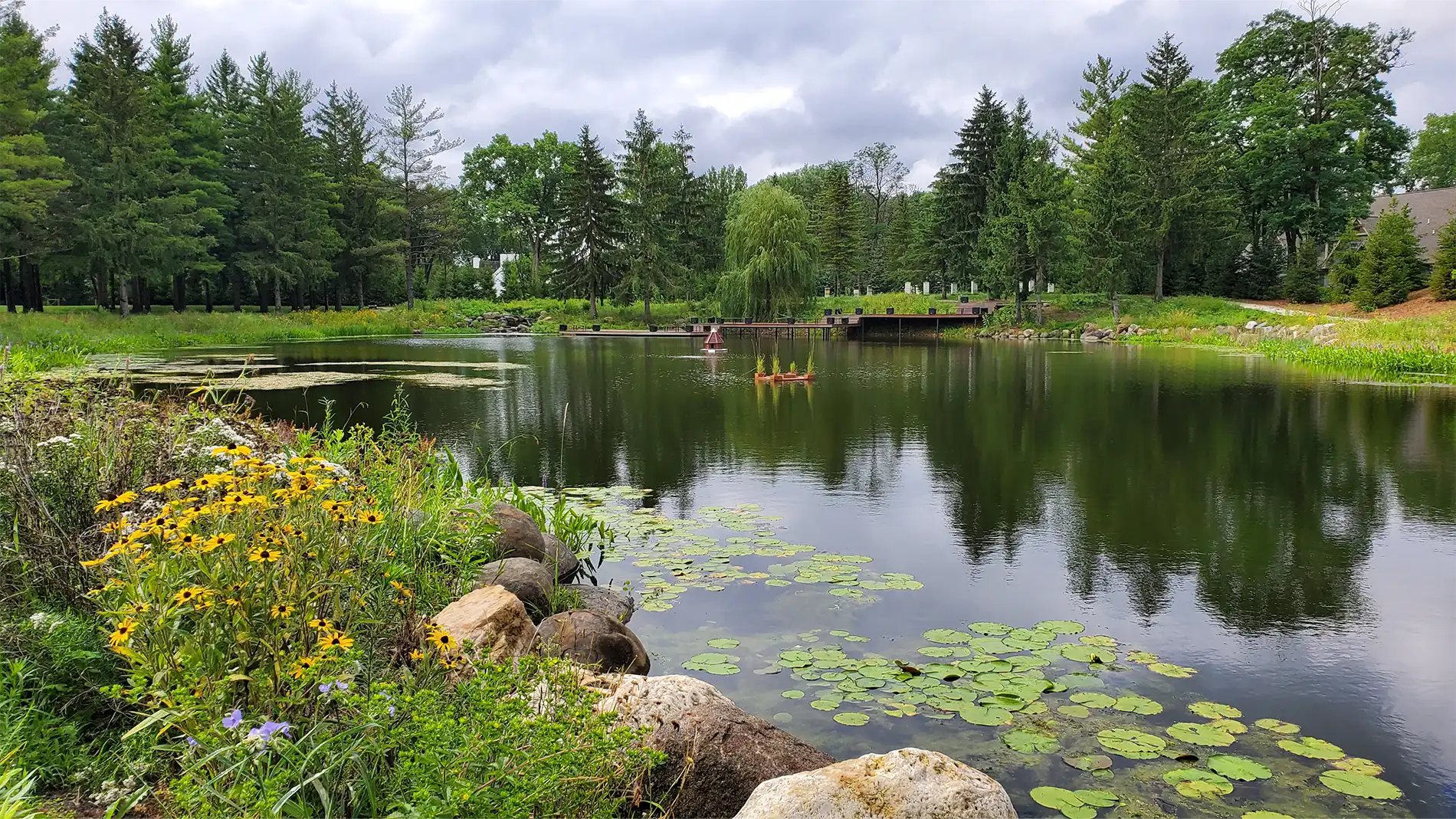Eco-Friendly Solutions for Algae Control in Your Pond or Water Garden
March 22, 2023, 0 CommentsAlgae growth is a common issue faced by pond and water garden owners. While some algae can be beneficial, providing oxygen and serving as a food source for fish, excessive growth can lead to unsightly water, unpleasant odors, and an imbalance in your pond’s ecosystem. Fortunately, there are eco-friendly solutions for controlling algae in your pond or water garden. In this blog post, we will discuss some natural methods to keep algae growth under control and maintain a healthy, beautiful water feature.
Improve Water Circulation
Stagnant water creates a favorable environment for algae growth. By improving water circulation, you can help prevent the conditions that promote algae. Consider installing a pond pump, waterfall, or fountain to keep the water moving and maintain proper oxygen levels.
Limit Nutrient Levels
Algae thrive in water with high nutrient levels, particularly nitrogen and phosphorus. Reduce nutrient input by avoiding overfeeding fish, promptly removing uneaten food and debris, and minimizing the use of fertilizers near your pond. You can also add beneficial bacteria to help break down organic matter and compete with algae for nutrients.
Utilize Natural Filtration
Incorporate plants that naturally filter water into your pond or water garden design. Floating plants, like water lettuce and water hyacinth, as well as submerged plants, such as hornwort and anacharis, can help absorb excess nutrients and improve water quality.
Add Barley Straw
Barley straw is a popular and natural method for controlling algae growth. As the straw decomposes, it releases compounds that inhibit algae reproduction. Place a small bale of barley straw in a mesh bag and float it in your pond. The straw typically takes a few weeks to become effective and can last up to six months.
Introduce Algae-Eating Organisms
Adding algae-eating organisms to your pond can help control algae populations. Some fish species, such as koi, goldfish, and certain types of catfish, will consume algae as part of their diet. Additionally, snails and some freshwater shrimp species can be effective at controlling algae growth.
Manage Sunlight Exposure
Algae require sunlight for photosynthesis, so controlling the amount of sunlight your pond receives can help limit algae growth. Incorporate shade-providing plants, like water lilies and lotus, or use a pond dye to reduce sunlight penetration. Additionally, consider strategically placing your pond in an area that receives partial shade during the day.
Regularly Clean Your Pond
Routine pond maintenance is essential for preventing algae blooms. Regularly remove debris, such as leaves and twigs, using a pond skimmer or net. Clean filters and pumps as needed to ensure they are operating efficiently.
Conclusion
Controlling algae in your pond or water garden doesn’t have to involve harsh chemicals or complicated treatments. By implementing these eco-friendly solutions, you can effectively manage algae growth while maintaining a healthy, balanced ecosystem. At Reflections Water Gardens, we are committed to helping you create and maintain a beautiful, sustainable water feature. Contact us today for expert advice and services tailored to your pond’s unique needs.
FAQ's About algae control
How can I improve water circulation to reduce algae growth?
Good water circulation helps prevent algae-friendly stagnant zones. Install features like a pond pump, waterfall, or fountain to keep water moving and maintain healthy oxygen levels.
What are eco-friendly ways to limit nutrient levels that promote algae?
Avoid overfeeding fish and promptly remove uneaten food or debris. Also minimize fertilizer use nearby and consider adding beneficial bacteria, which help break down organic waste and compete with algae for nutrients.
Which plants naturally help control algae in a water garden?
Use floating plants like water lettuce and water hyacinth, or submerged plants such as hornwort and anacharis. These aquatic plants absorb excess nutrients, improving water clarity and quality naturally.
How does barley straw help manage pond algae naturally?
Barley straw, when placed in a mesh bag and floated in your pond, slowly decomposes and releases compounds that inhibit algae growth. It becomes effective after a few weeks and can last up to six months.
Can adding algae-eating creatures reduce algae in my pond?
Yes! Certain fish like koi, goldfish, and algae-eating catfish eat algae as part of their diet. Snails and freshwater shrimp can help too, naturally keeping algae populations under control.


0 Comments